21 Wild Animals in Trinidad And Tobago [Wildlife in Trinidad And Tobago]
Want to know more about the wildlife in Trinidad And Tobago?
Discover 21 wild animals in Trinidad And Tobago in this post, as well as interesting facts about them. 🇹🇹
Learn All About Trinidadian and Tobagonian Animals
Ready to learn all about Trinidadian and Tobagonian animals?
I’ve always been fascinated by animals, and by how they can be so different from one country to another. In this guide, we’ll focus on the many animals Trinidad and Tobago has on the land, in the sky, and underwater.
I’ve split the guide into 4 categories:
- Native animals from Trinidad and Tobago
- Endangered animals of Trinidad and Tobago
- What is Trinidad and Tobago national animal?
- How many animals native to Trinidad and Tobago?
Let’s dive in right away with our first category!
Native Animals from Trinidad and Tobago
Trinidad and Tobago is the southernmost island country in the Caribbean Sea. It is located just off the coast of Venezuela (about 11 km / 6.8 mi) and 130 km / 81 mi south of Grenada, has been inhabited by indigenous peoples for centuries, heavily relies on petrol for its economy (and not tourism, unlike other Caribbean Islands), and used to be a Spanish colony. It is surrounded by the Caribbean Sea, and although its largest city is San Fernando, its capital is Port of Spain, which counts more than 37,000 inhabitants (but more than 81,000 if you include the metropolitan area).
An interesting part of the country that I wanted to tackle is its wildlife. In light of that, I have listed the best of it, and I hope you will love learning what animals live in Trinidad and Tobago.
Here’s the Trinidad and Tobago animals list.
1. Leatherback sea turtle
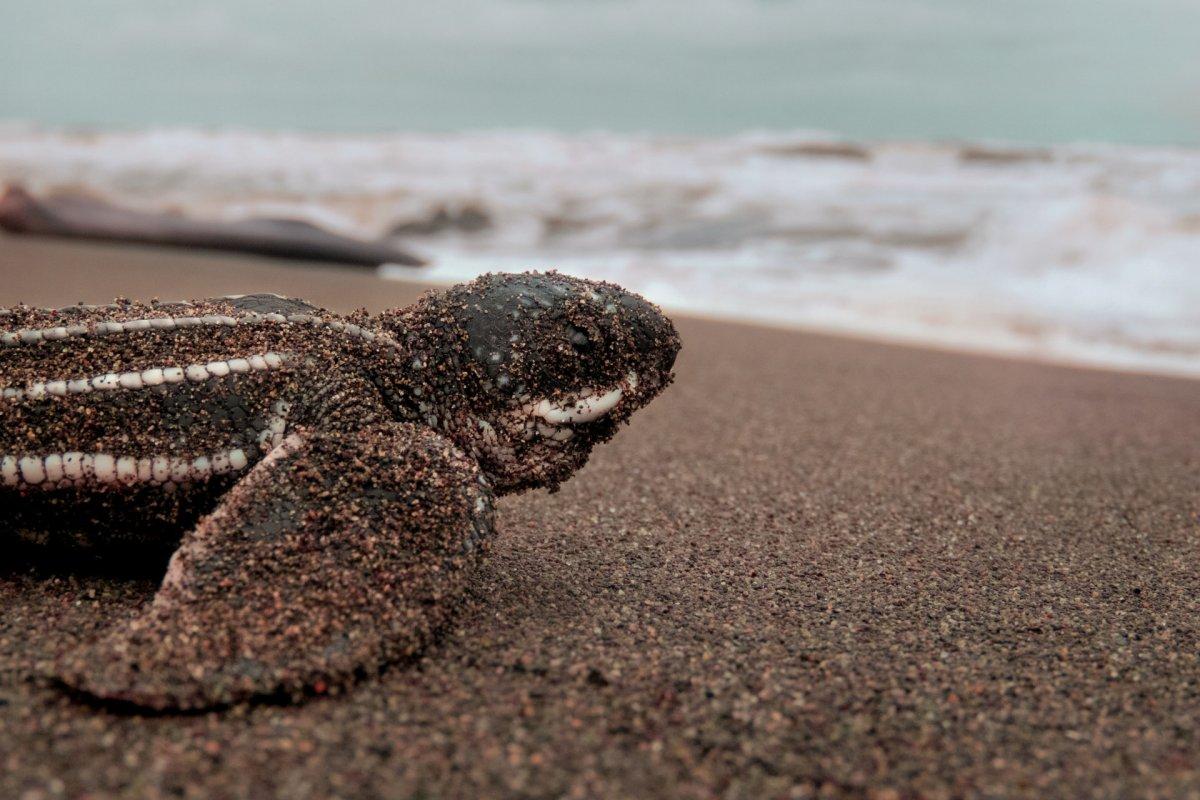
- Name: Leatherback sea turtle
- Scientific name: Dermochelys coriacea
- Conservation status:
You will rarely see a more impressive animal than the leatherback sea turtle. Also known as the lute turtle, the leathery turtle, or the lute, it is the largest of all turtles, and the heaviest reptile aside from crocodiles.
Trinidad and Tobago is a very important nesting site for the leatherback sea turtle, which is becoming more and more endangered. The main threats it has to face are light pollution, fishing accidents, and chemical pollution. It is extremely vulnerable in the early stages of its life.
2. Green anaconda
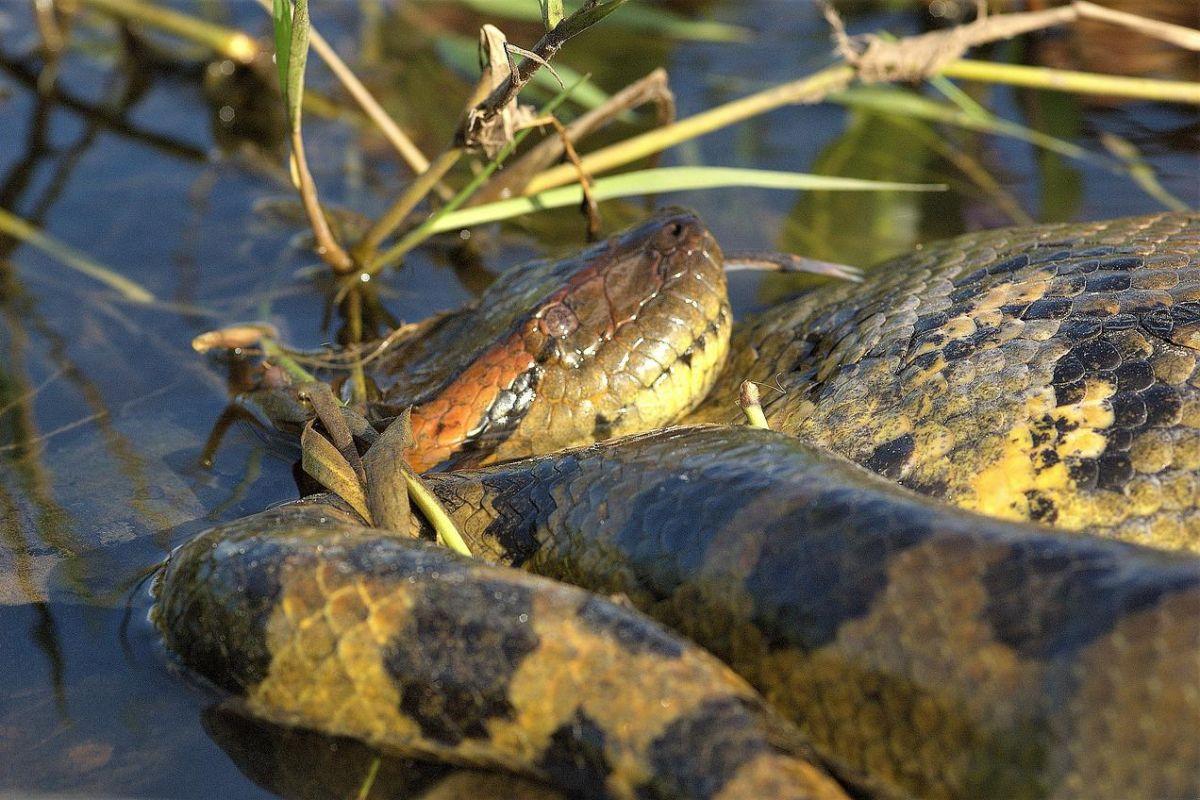
- Name: Green anaconda
- Scientific name: Eunectes murinus
- Conservation status:
The green anaconda, also known as the common water boa, the sucuri, the giant anaconda, or the common anaconda, is the heaviest snake in the world, and one of the longest ones as well. It is found in much of South America, as well as in Trinidad and Tobago, and although not venomous, it is a very strong constrictor.
In 1963, a female green anaconda was shot. It measured 7.9 m / 25 ft 11 inch in length, and contained a 1.5 m / 4 ft 11 in caiman!
3. Ocelot
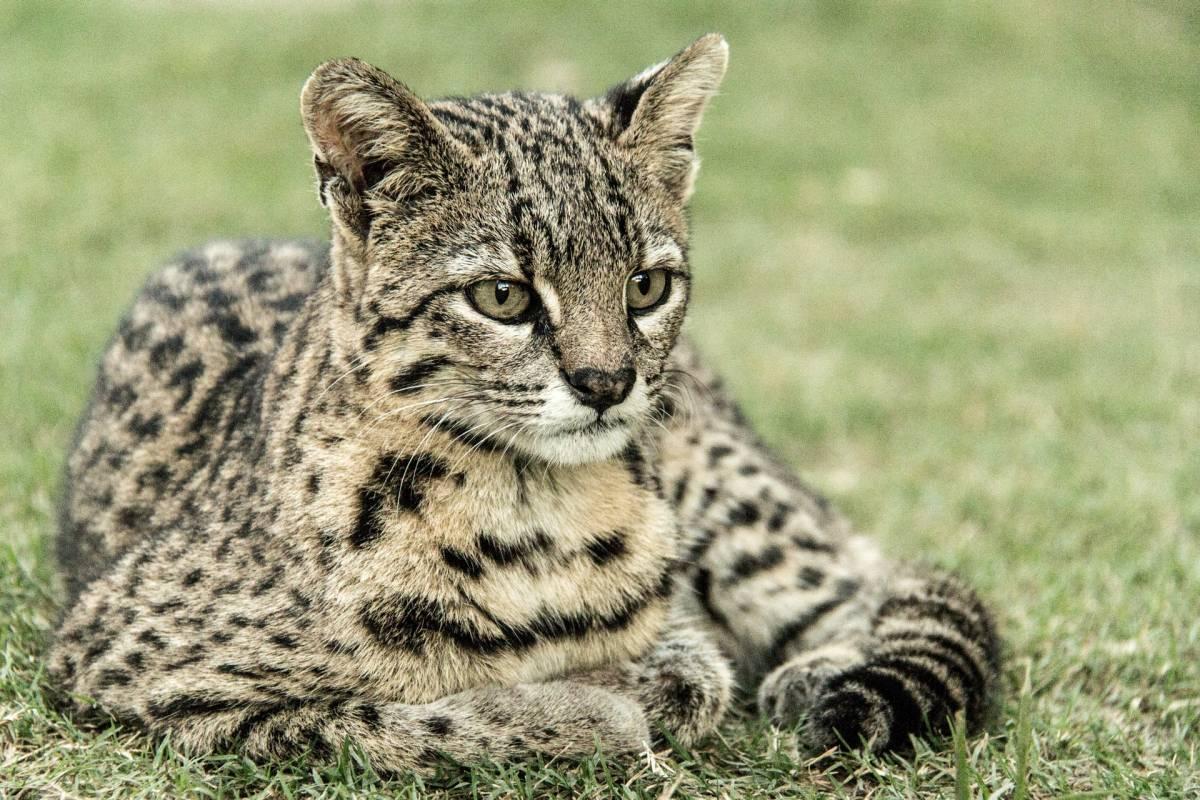
- Name: Ocelot
- Scientific name: Leopardus pardalis
- Conservation status:
The ocelot is a medium-sized species of wild cat native to Central and South America, as well as the Caribbean Islands of Trinidad and Margarita. It inhabits areas near bodies of water and is an agile predator. It has long been an important cultural symbol in Mesoamerica, particularly during the Aztec and Incan times, when it was depicted in art and mythology.
Although a wild animal, an ocelot known as Babou has been Salvador Dalí’s pet.
4. West Indian manatee
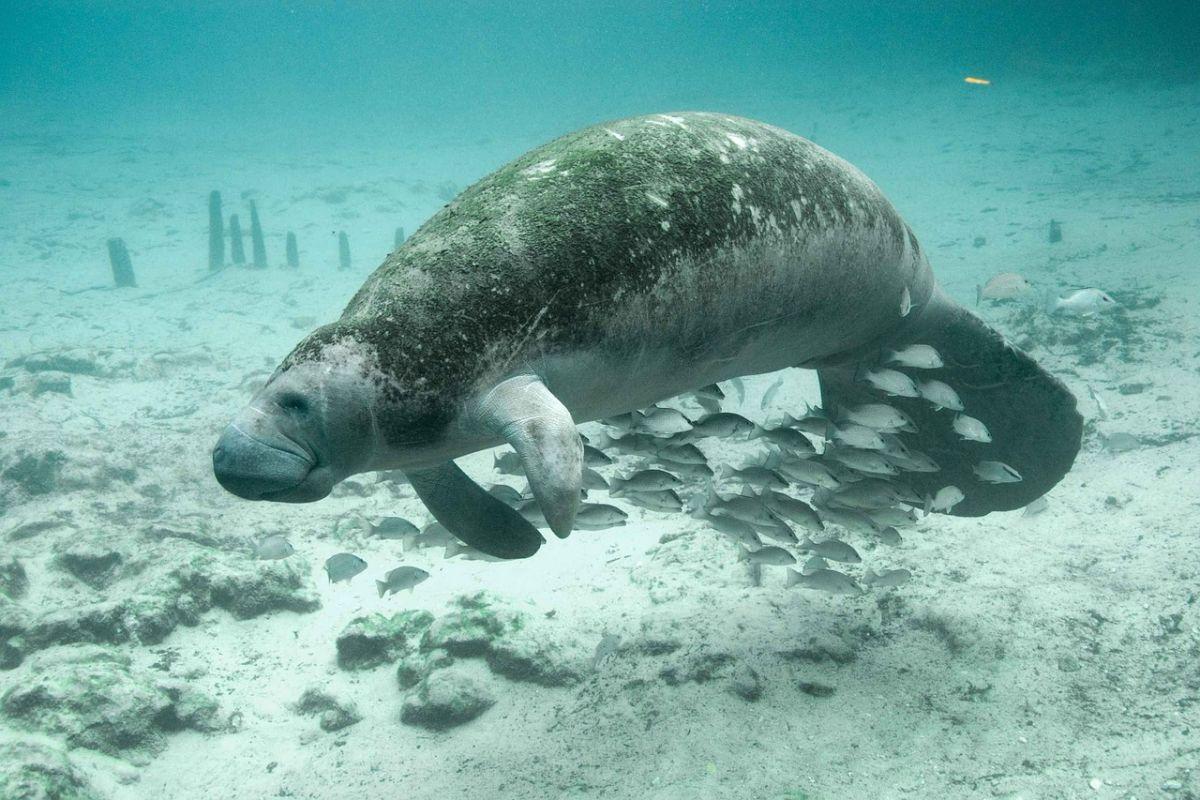
- Name: West Indian manatee
- Scientific name: Trichechus manatus
- Conservation status:
The West Indian manatee, also known as the North American manatee, is the largest species of manatee in the world. It is a marine mammal native to the coastlines of northern, central, and southern America, and is also distributed throughout the Caribbean Islands.
This manatee is present in Trinidad but is extirpated from all the Lesser Antilles. Since it evolved in habitats without any natural predators, the West Indian manatee is particularly vulnerable, especially at a young age.
5. Spectacled caiman
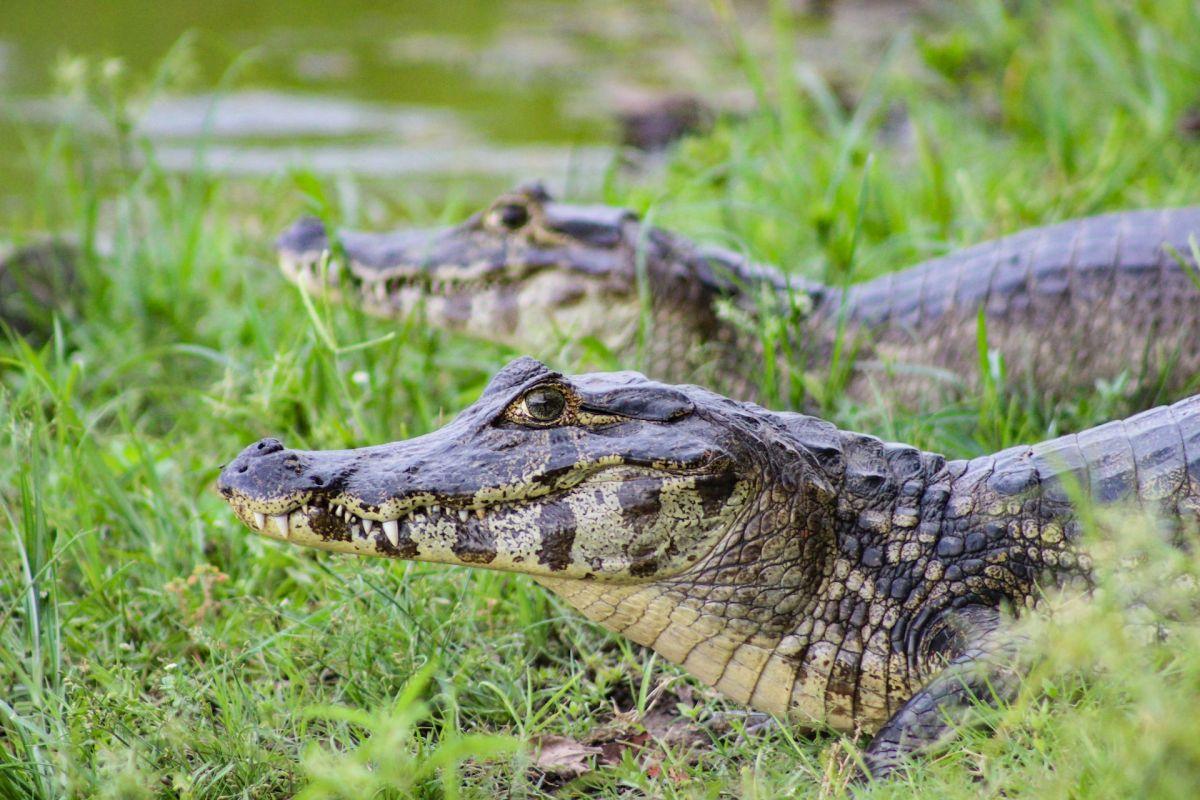
- Name: Spectacled caiman
- Scientific name: Caiman crocodilus
- Conservation status:
The spectacled caiman, also known as the speckled caiman, the common caiman, or the white caiman, is a species of crocodilian native to Central and South America. It has a wide range and a large population and is accordingly listed as least concern.
Although usually immobile, the spectacled caiman can move surprisingly rapidly when threatened. During the rainy season, it becomes much more aggressive and territorial and should be avoided.
6. Neotropical otter
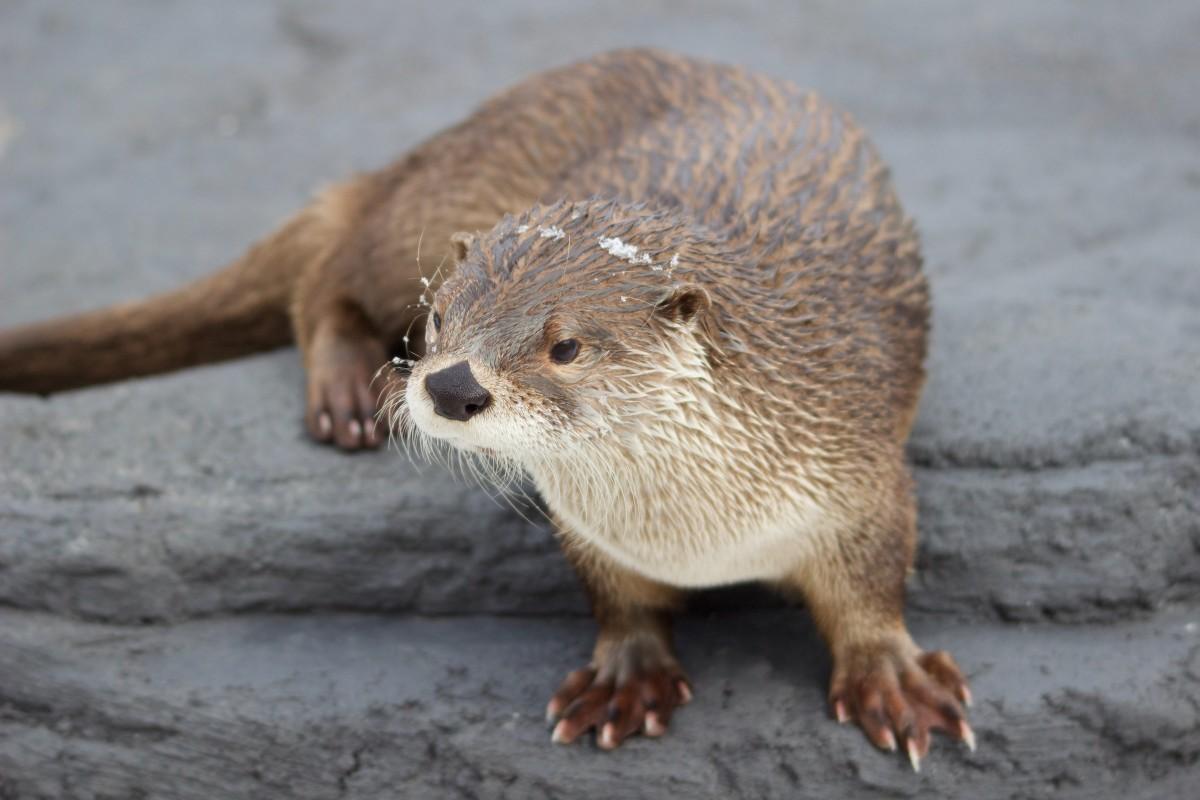
- Name: Neotropical otter
- Scientific name: Lontra longicaudis
- Conservation status:
The neotropical otter, also known as the neotropical river otter, is a species of otter native to Central and South America, and the island of Trinidad. It is physically very similar to its relative, the northern and southern river otter, and inhabits multitudes of riverine habitats, from streams to rivers.
This mustelid is solitary and primarily feeds on crustaceans and fish. It usually lives in areas at elevations of up to 1,500 m / 4,900 ft, but some specimens were seen as high as 3,000 m / 9,800 ft above sea level.
7. Red-rumped agouti
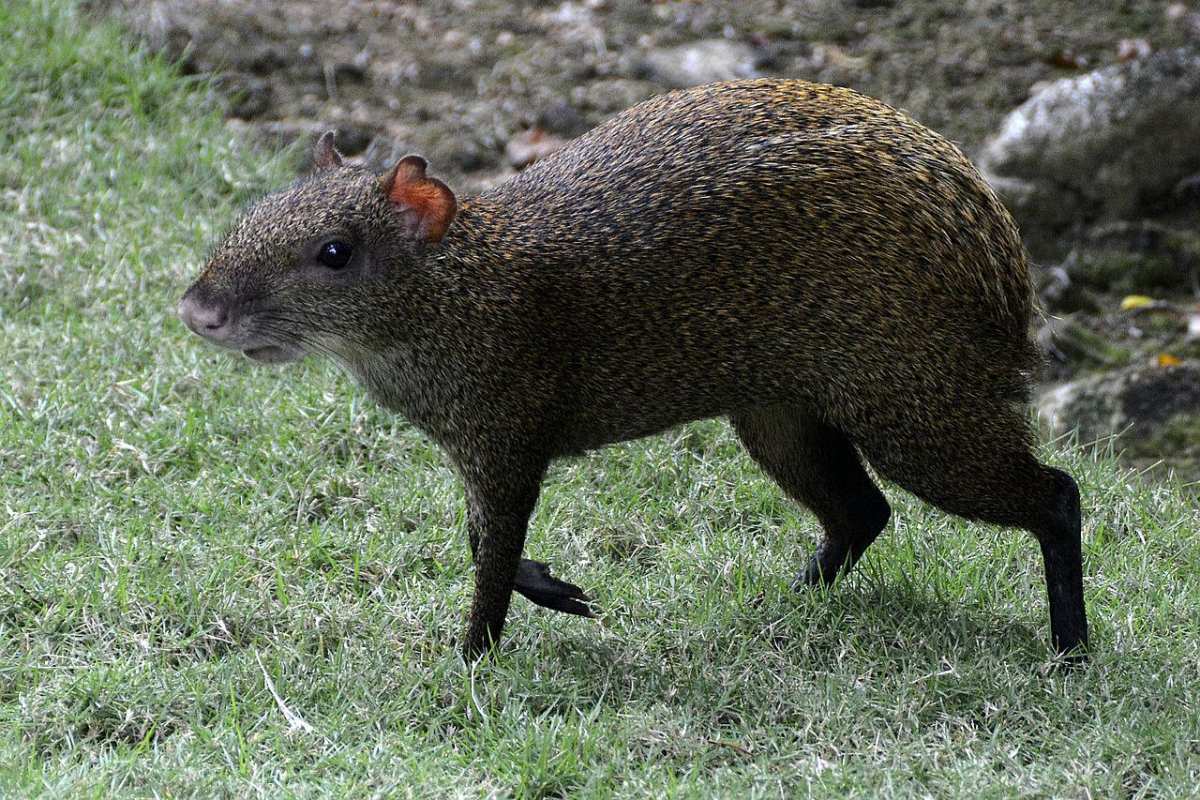
- Name: Red-rumped agouti
- Scientific name: Dasyprocta leporina
- Conservation status:
The red-rumped agouti, also known as the orange-rumped agouti, the Brazilian agouti, or the golden-rumped agouti, is a species of agouti native to the northernmost part of South America.
This mammal inhabits the rainforests and secondary forests of Trinidad and Tobago, where it feeds on pulp, leaves, seeds, fruits, and roots. Occasionally, it can also eat insect larvae if plant resources are low, and it lives in pairs or small family groups.
8. Common tree frog
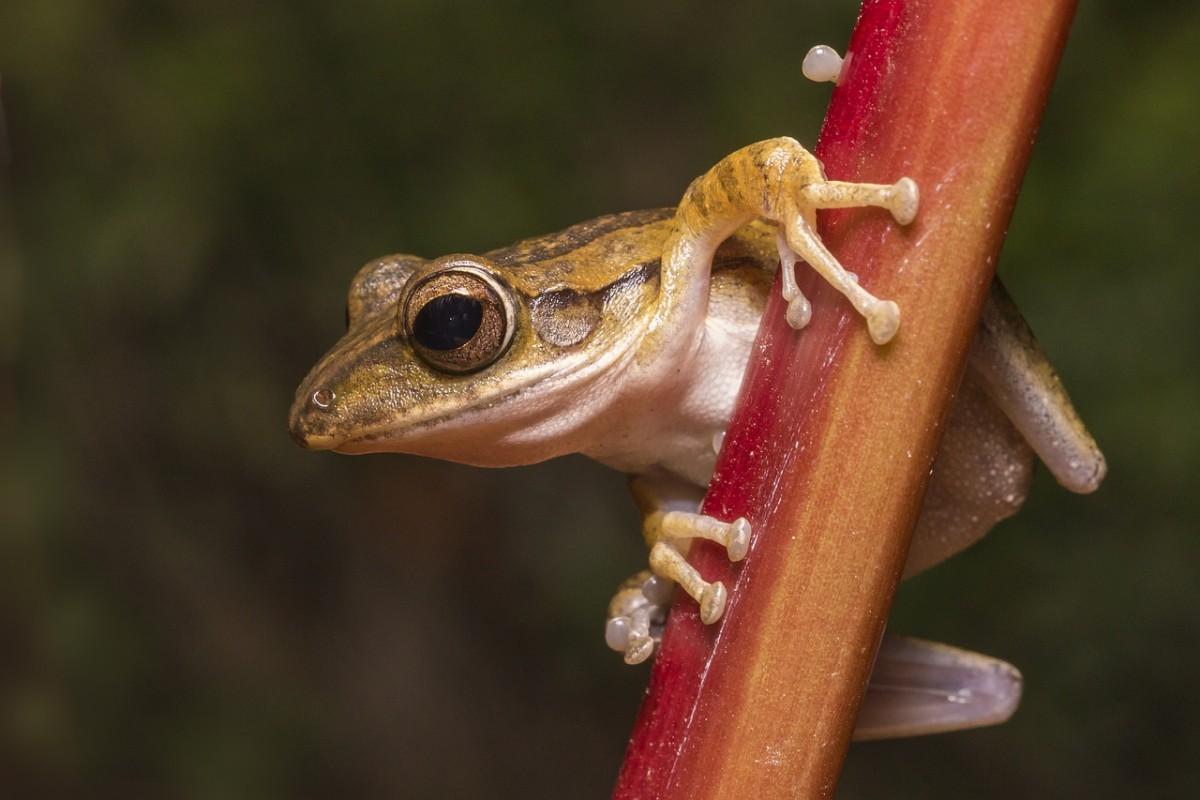
- Name: Common tree frog
- Scientific name: Polypedates leucomystax
- Conservation status:
The common tree frog, also known as the golden tree frog, the four-lined tree frog, or the striped tree frog, is a species of frog found in Trinidad’s northernmost mountain range, in its highest peaks. It is commonly kept in captivity.
This frog lives in subtropical and tropical dry forests, as well as montane and lowland forests. It builds a protective foam nest, where the female deposits 100 to 400 eggs.
9. Whale shark
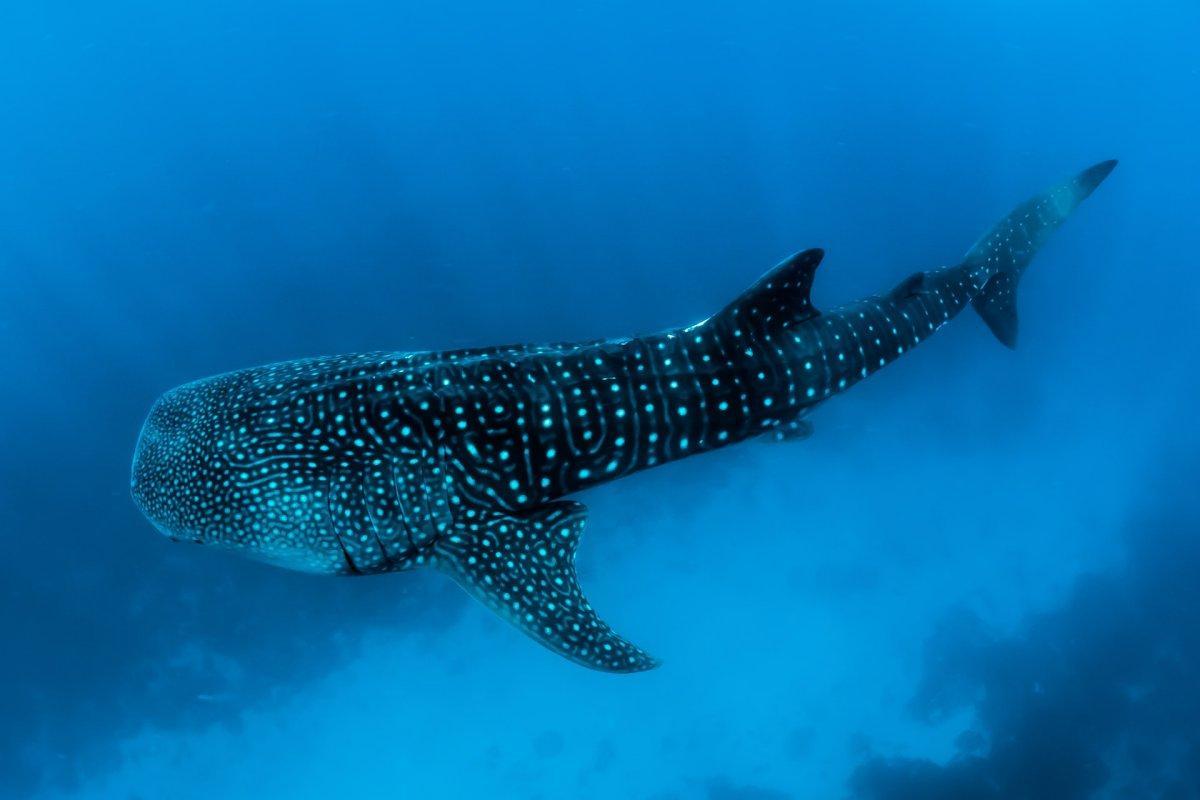
- Name: Whale shark
- Scientific name: Rhincodon typus
- Conservation status:
The whale shark is an extremely impressive species of shark and the largest fish in the world. It can reach a maximum length of 18.8 m / 61.7 ft, but is not a threat to humans; instead, it feeds on plankton and small fishes and is slow-moving.
This shark is one of many examples of marine life around Trinidad and Tobago and inhabits water above 21 °C / 70 °F of the world.
10. Green iguana
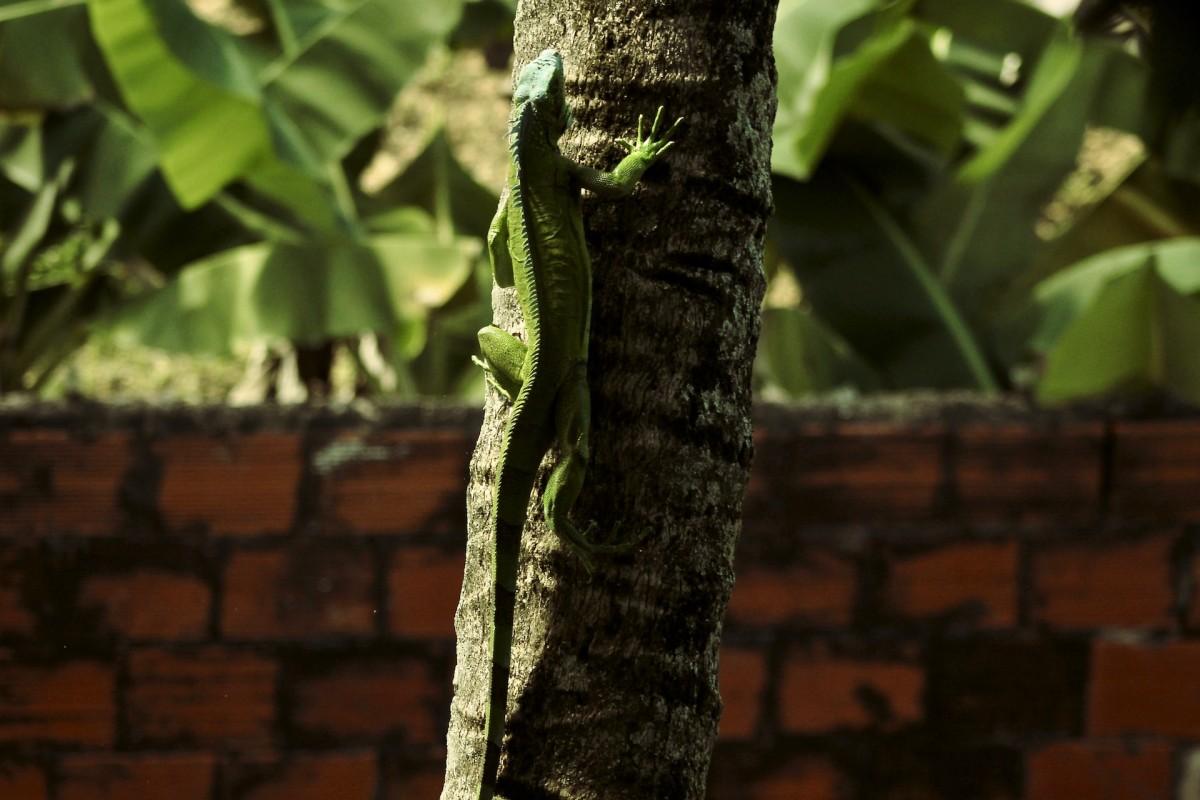
- Name: Green iguana
- Scientific name: Iguana iguana
- Conservation status:
The green iguana, also known as the common green iguana, the American iguana, or simply the iguana, is a large species of lizard native to Central and South America. It is very commonly kept in captivity and has established feral populations in Hawaii, Florida, and Texas.
Within its native range, the green iguana has long been hunted by local people. It is an arboreal and diurnal reptile that usually lives near water. Interestingly enough, it can fall up to 15 m / 50 ft onto the ground without being hurt.
11. Collared peccary
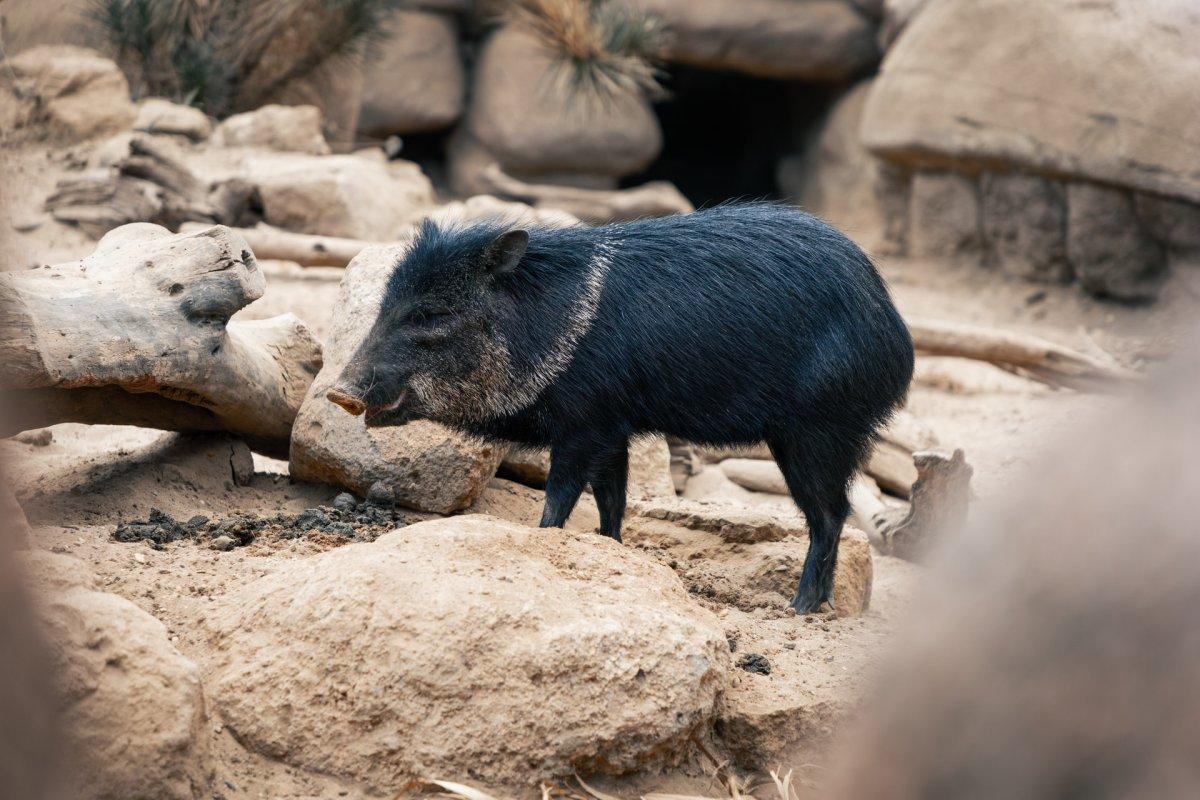
- Name: Collared peccary
- Scientific name: Dicotyles tajacu
- Conservation status:
The collared peccary, also known as the musk hog or locally in Trinidad as the quenk, is a species of ungulate native to North, Central, and South America. Trinidad is the only Caribbean Island to which it is native, but it used to be present in Tobago.
This mammal lives in groups of up to 50 members and is active during the day. It sleeps in burrows, usually under the roots of trees, and generally ignores humans, although some Amazonian peoples have tamed collared peccaries.
12. Common boa
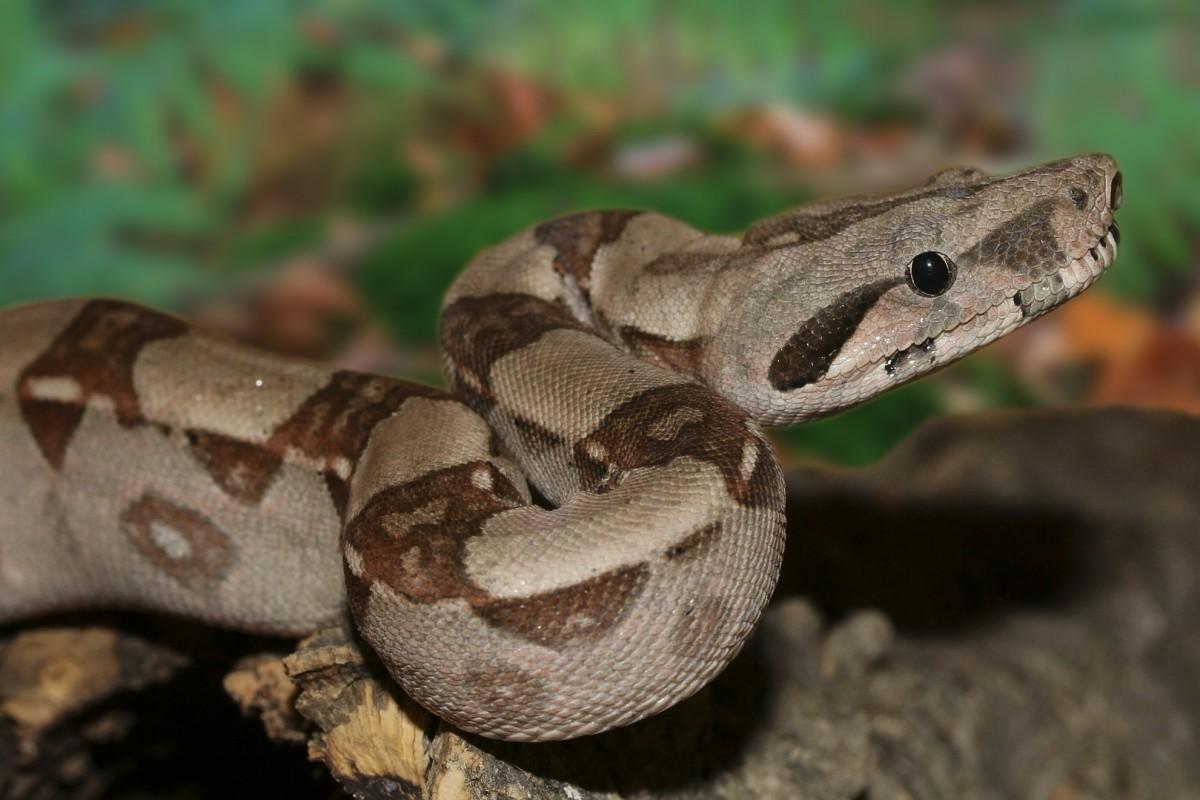
- Name: Common boa
- Scientific name: Boa constrictor
- Conservation status:
The common boa, also known as the red-tailed boa and widely known by its scientific name, Boa constrictor, is a large species of snake native to South America. Similar to the anaconda, it is non-venomous but kills its prey by suffocating it with its particularly strong muscles.
Known as the “macajuel” in Trinidad, it inhabits the tropical rainforests of the island, where it has natural cover from predators, a large amount of potential prey, and ideal humidity and temperature.
13. Trinidad piping guan
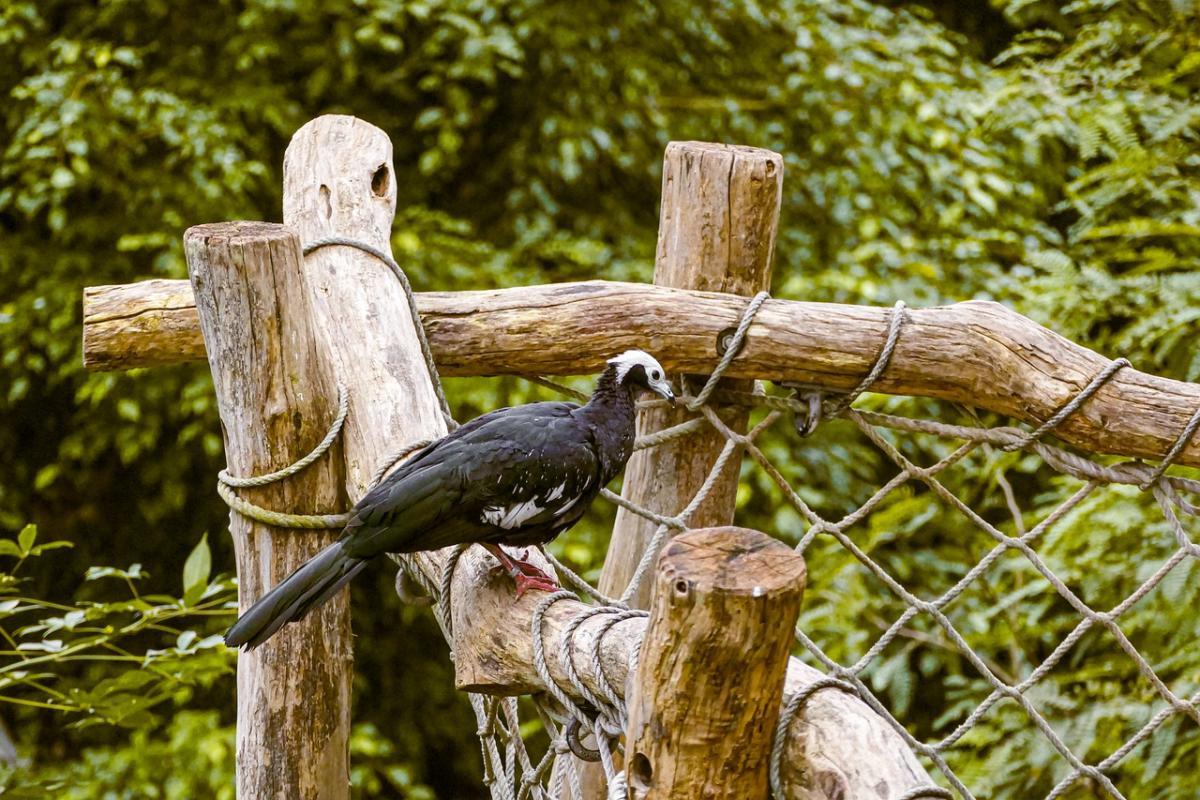
- Name: Trinidad piping guan
- Scientific name: Pipile pipile
- Conservation status:
The Trinidad piping guan, locally known as the pawi, is a species of bird endemic to the island of Trinidad. It is one of the few endemic bird species in the country, and is on the brink of extinction due to illegal hunting and habitat loss, although it used to be very common on the island.
This bird lives in the forests of Trinidad and builds and nests in trees, where it lays 3 large white eggs. It is an arboreal species that feeds on flowers, fruit, leaves, and berries.
14. Humboldt’s white-fronted capuchin
- Name: Humboldt’s white-fronted capuchin
- Scientific name: Cebus albifrons
- Conservation status:
Humboldt’s white-fronted capuchin is a species of capuchin monkey native to Colombia, Brazil, Venezuela, and Trinidad. It is one of two native primate species aside from humans, alongside the Guyanan red howler monkey.
This monkey lives in the primary forest of Trinidad, and is only locally considered on the brink of extinction (with only about 50 individuals left), while its global assessment is “Least concern”. It feeds on a wide variety of animal and plant matter, including small mammals, flowers, leaves, nectar, honey, and tree frogs.
15. Tufted capuchin
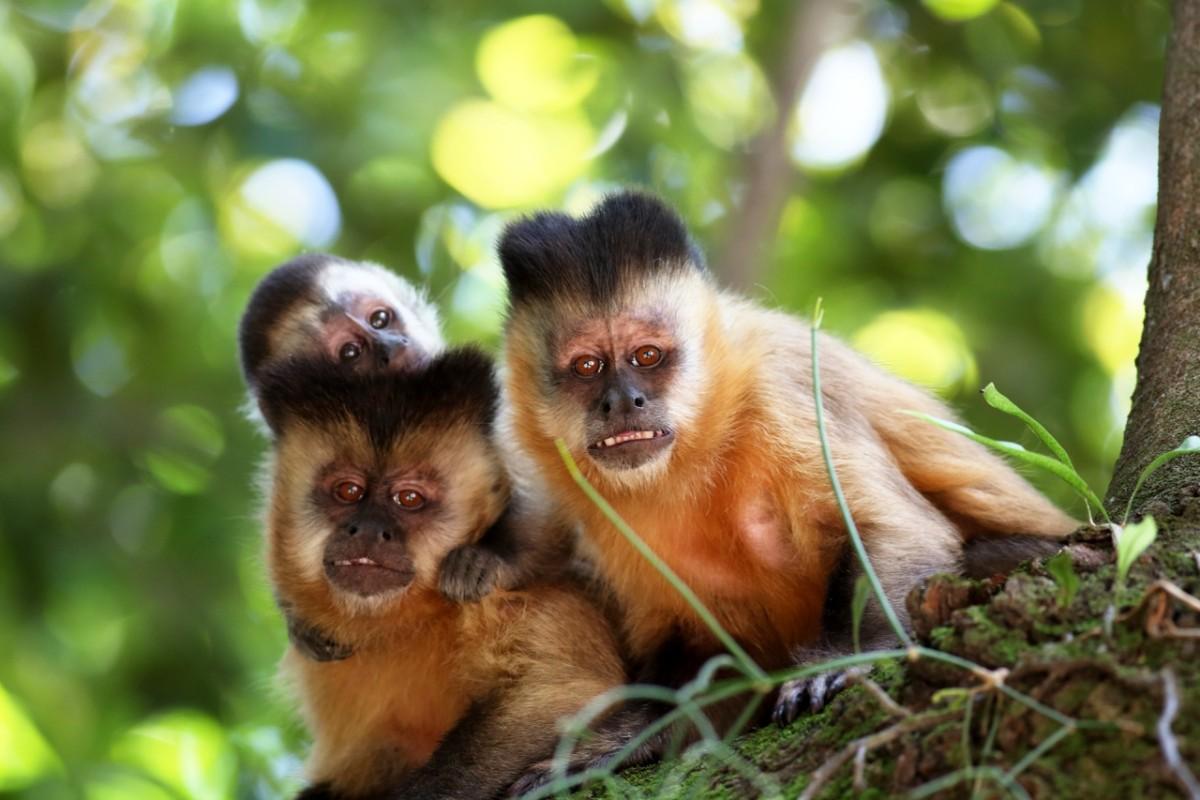
- Name: Tufted capuchin
- Scientific name: Sapajus apella
- Conservation status:
The tufted capuchin, also known as the pin monkey, the black-capped capuchin, or the brown capuchin, is a species of New World primate native to South America and introduced to the Caribbean islands of Trinidad and Margarita.
It is one of the most widespread primates in the Neotropics, and is an omnivorous animal, feeding on invertebrates and fruits, as well as plants and small vertebrates such as bird chicks or lizards.
16. Crab-eating raccoon
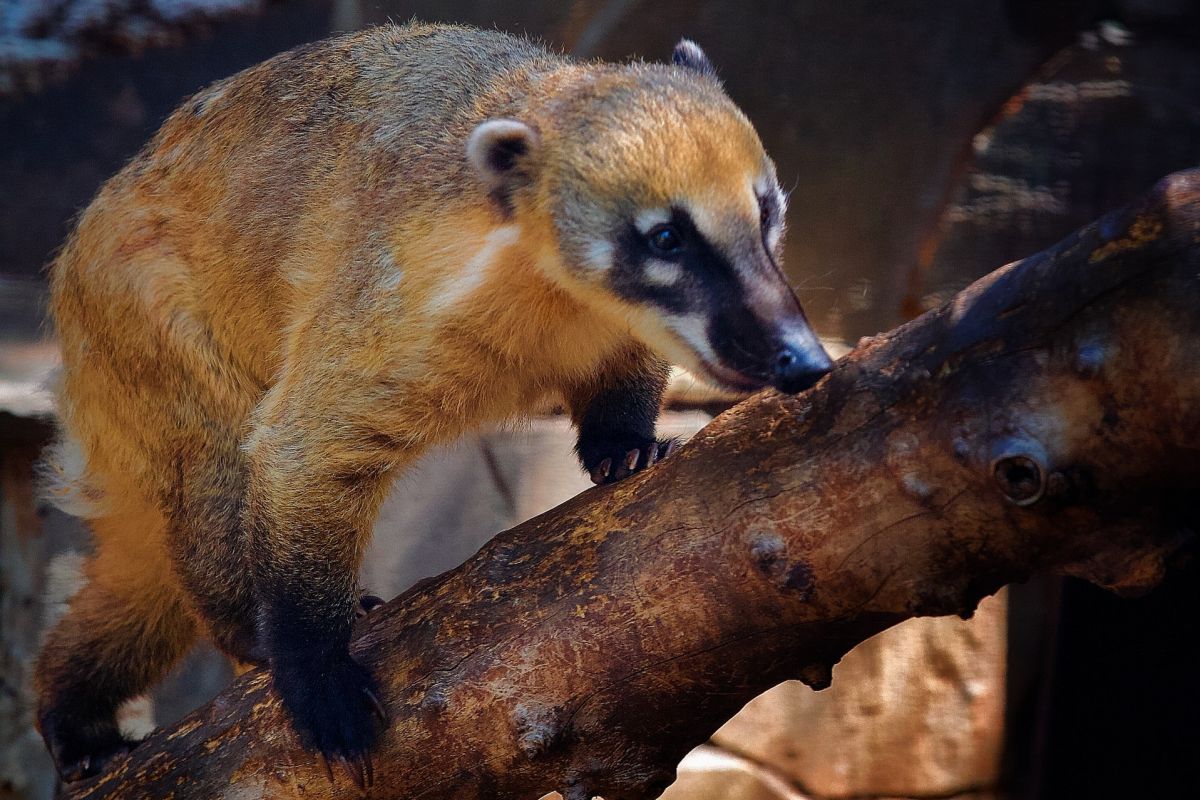
- Name: Crab-eating raccoon
- Scientific name: Procyon cancrivorus
- Conservation status:
The crab-eating raccoon, also known as the South American raccoon, is a species of raccoon native to Central and South America, as well as Trinidad and Tobago. It is the only native carnivorous mammal found in Tobago.
Despite its name, the crab-eating raccoon does not exclusively feed on crab, although it represents a vast part of its diet. It is a nocturnal and solitary animal that inhabits the mangrove forests and inland rivers of Trinidad and Tobago.
17. Tayra
- Name: Tayra
- Scientific name: Eira barbara
- Conservation status:
The tayra is a species of weasel native to Central and South America. Known as the high-woods dog in Trinidad, it is a long, slender animal with dark brown to black fur.
Within the country, this mammal can only be found on the island of Trinidad, usually in subtropical and tropical forests, but sometimes in croplands and cultivated plantations. On the whole, it is on the decline due to habitat destruction and agricultural expansion.
18. Nine-banded armadillo
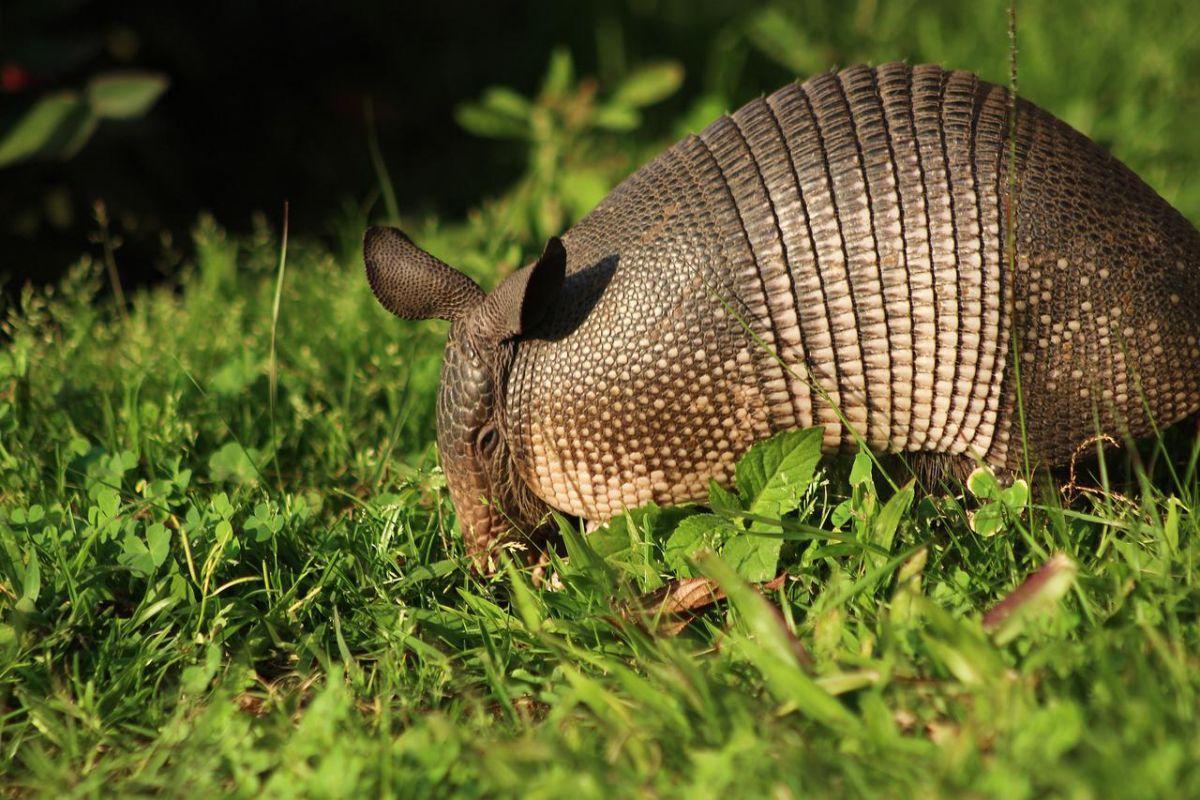
- Name: Nine-banded armadillo
- Scientific name: Dasypus novemcinctus
- Conservation status:
The nine-banded armadillo, also known as the common long-nosed armadillo or the nine-banded long-nosed armadillo, is a species of armadillo native to North, Central, and South America, and is the most widespread of all armadillos.
On top of this, the nine-banded armadillo is one of the least threatened armadillos, considering how endangered they are as a group. It can be found on both islands of Trinidad and Tobago.
19. Silky anteater
- Name: Silky anteater
- Scientific name: Cyclopes didactylus
- Conservation status:
The silky anteater, also known as the pygmy anteater, is a small species of anteater native to the southern half of Central America, and the northern half of South America. It is the smallest anteater in the world and is both nocturnal and completely arboreal.
In Trinidad and Tobago, the silky anteater can only be found in Trinidad. There, it inhabits a wide range of forest types, primarily mangrove, tropical evergreen, and semi-deciduous forests, and can be found at altitudes of up to 1,500 m / 4,900 ft above sea level.
20. Small Indian mongoose
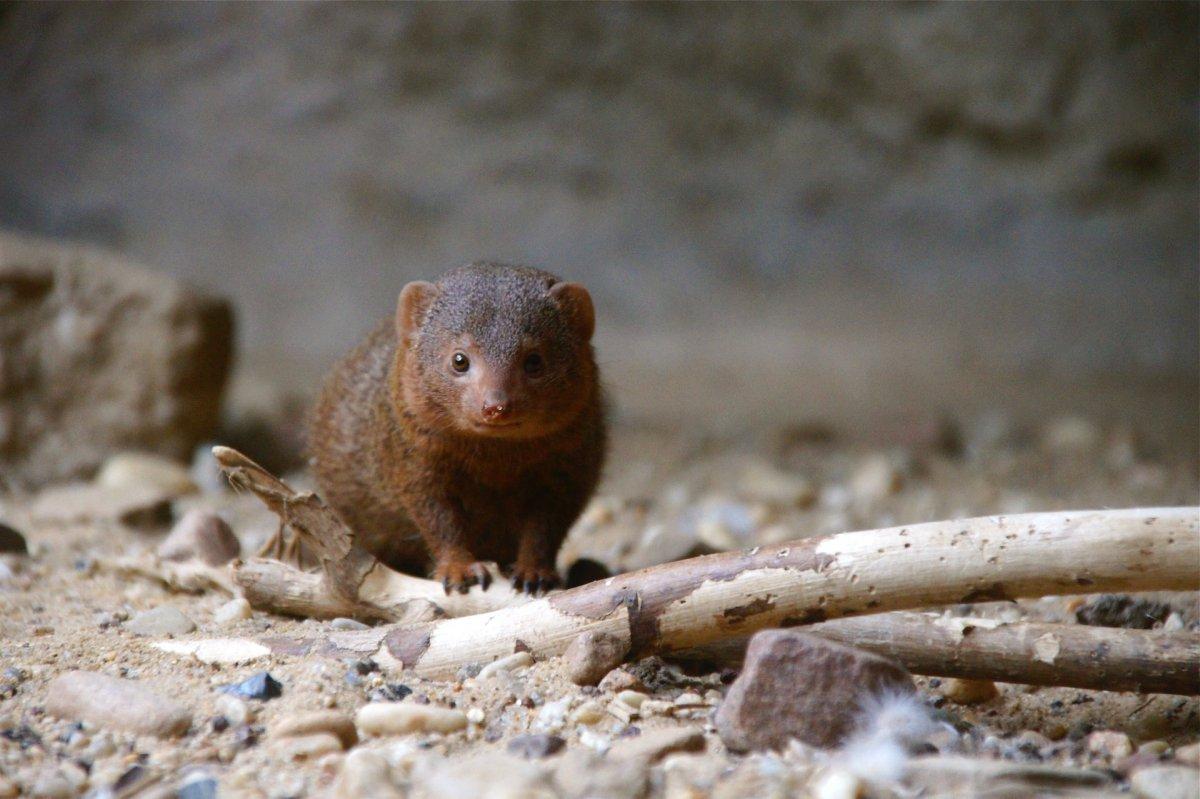
- Name: Small Indian mongoose
- Scientific name: Urva auropunctata
- Conservation status:
The small Indian mongoose is a species of mongoose native to the Indian subcontinent, as well as Iraq, and introduced to many other countries in the world, mostly some Caribbean and Pacific Islands, including Trinidad and Tobago, where it arrived at the end of the 19th century, in hopes to control the black and brown rat populations.
It is now strongly integrated into Trinidad’s environment and is here to stay. When it comes to feeding, it can eat small rodents, insects, birds, seeds, and fruits, and is thus omnivorous.
21. Southern tamandua
- Name: Southern tamandua
- Scientific name: Tamandua tetradactyla
- Conservation status:
The southern tamandua, also known as the lesser anteater or the collared anteater, is a species of anteater found in much of the northern half of South America, except for its mountainous regions in the West.
It is the other anteater found in Trinidad and Tobago and, similarly to the silky anteater, it only lives in Trinidad. As its name suggests, it almost exclusively feeds on ants and termites, which it digs out of their hills with its strong foreclaws.
—
So there you have them, this was my list of wild animals in Trinidad and Tobago. I hope you enjoyed this list and that you learned something new today.
In case you want to learn more about animals in the country, feel free to keep reading, as I still have lots of things to tell you about:
Endangered Animals of Trinidad and Tobago
This is definitely the saddest part of the list, but it is very important to raise awareness. Because of this, let’s go through the list of endangered animals in Trinidad and Tobago.
Here are the animals in danger of extinction in Trinidad and Tobago.
- None
- Trinidad white-fronted capuchin
- Nassau grouper
- Trinidad piping guan
- Great hammerhead
- Hawksbill sea turtle
- and 10 more…
- Trinidad worm snake
- Black-capped petrel
- Giant manta ray
- Green turtle
- Golden tilefish
- and 20 more…
To see the full list of endangered species in Trinidad and Tobago, head over to the International Union for Conservation of Nature’s Red List.
What is the National Animal of Trinidad and Tobago?
The national animal of Trinidad and Tobago is the scarlet ibis.
The scarlet ibis is a species of ibis with striking red plumage. It inhabits tropical South America and some areas in the Caribbean and is featured on Trinidad and Tobago’s coat of arms, alongside the cocrico.
Despite being the national animal of the country, the scarlet ibis can only be found on the island of Trinidad, and has not been spotted on Tobago for at least 15 years!
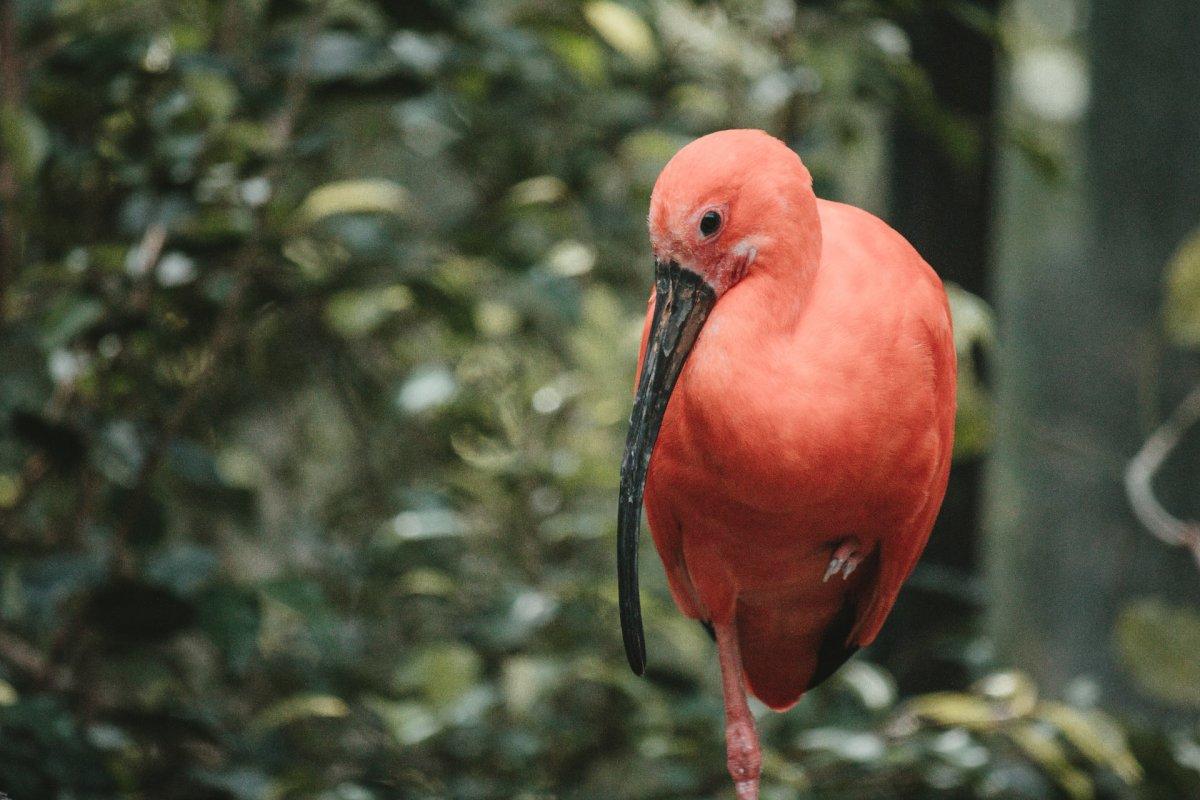
How Many Animals Native to Trinidad and Tobago?
What is the diversity of native animals in Trinidad and Tobago?
Let’s look at the total number of species of Chordata (mammals, birds, fishes, and reptiles).
Total number of animal species in Trinidad and Tobago: 2,047 (4,203 in total in the Caribbean Islands)
More About Animals in the World!
Loved these facts about the wildlife of Trinidad and Tobago? Want to see what animals live in other countries?
Then check out these posts:
Or click here to see ALL the facts up on the blog! Spoiler alert: there’s A LOT of them.
Share the knowledge! Click on the buttons below to share information about these native animals of Trinidad and Tobago with your friends, and help them learn more about the world 🙂
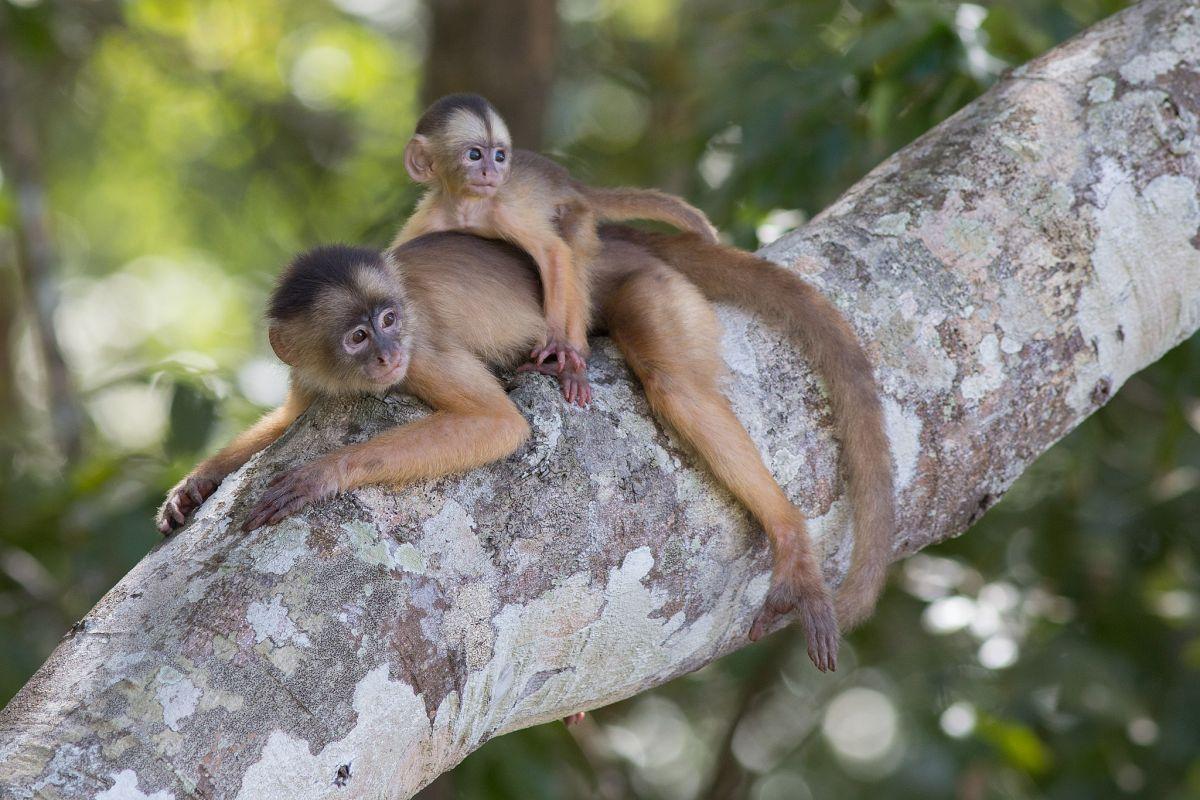
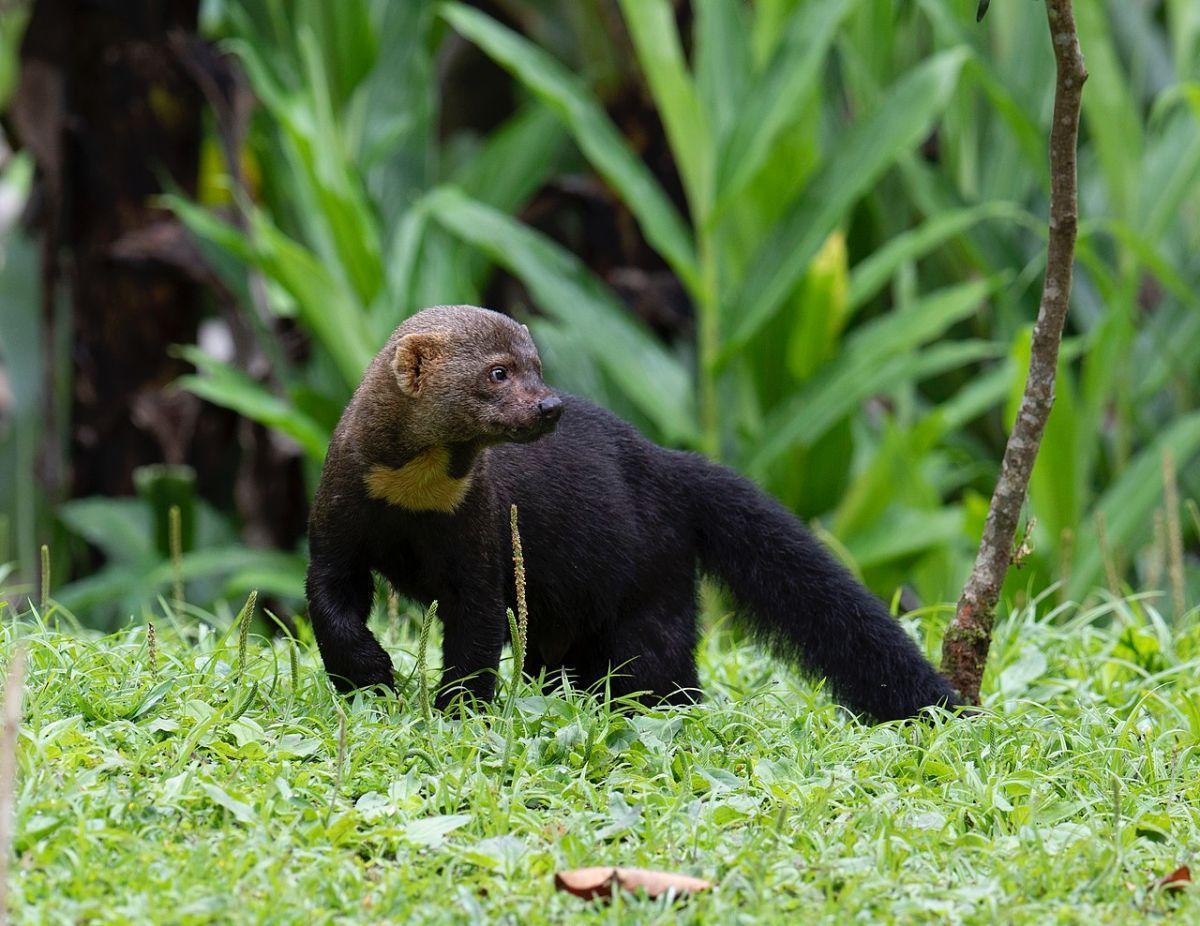
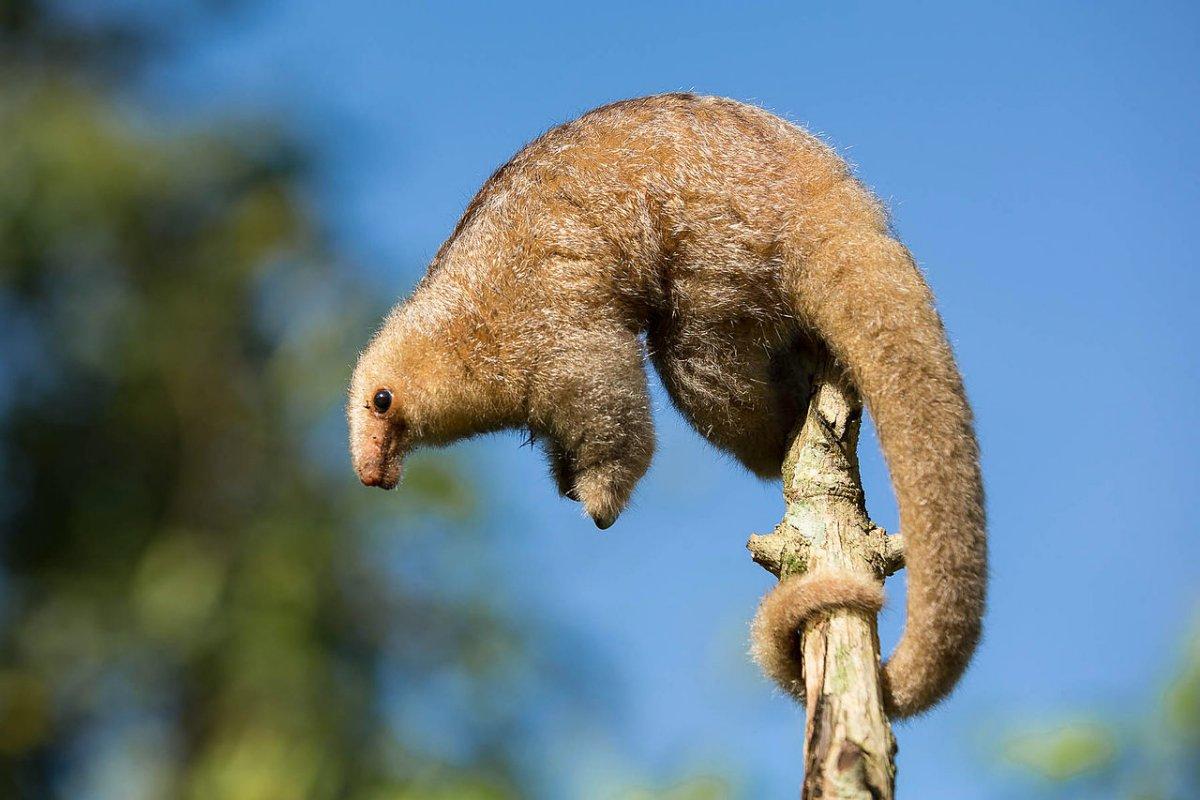
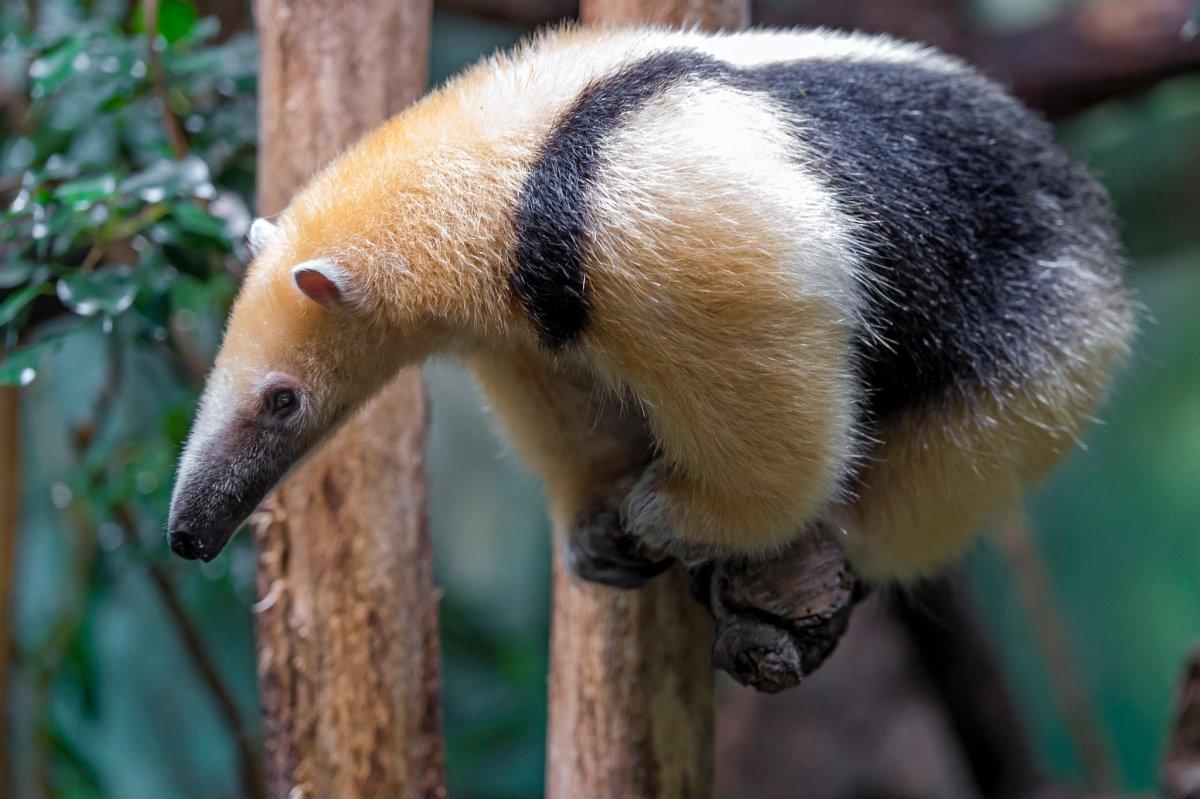

![15 Wild Animals in Honduras [Wildlife in Honduras]](https://www.kevmrc.com/wp-content/uploads/2022/08/15-wild-animals-in-honduras.jpg)
![33 Wild Animals in South Africa [Wildlife in South Africa]](https://www.kevmrc.com/wp-content/uploads/2022/12/33-wild-animals-in-south-africa.jpg)
![18 Wild Animals in Luxembourg [Wildlife in Luxembourg]](https://www.kevmrc.com/wp-content/uploads/2022/06/18-wild-animals-in-luxembourg.jpg)